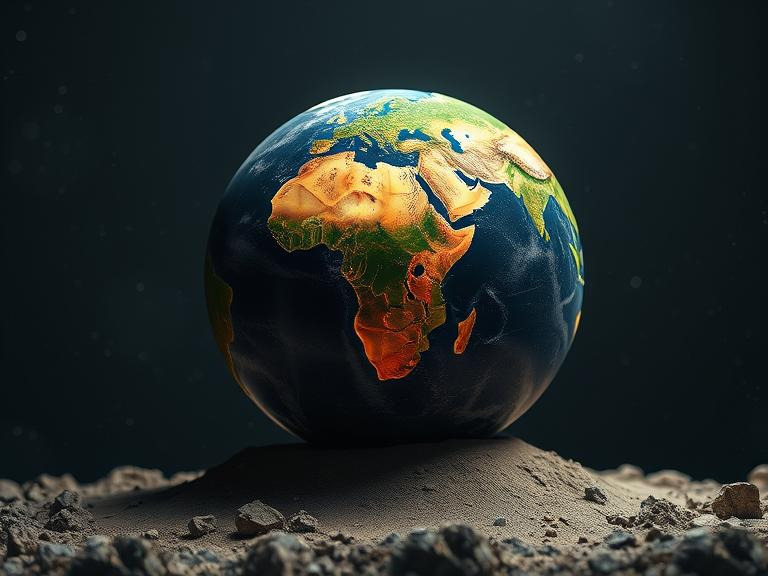The climate crisis is the defining challenge of our time. Rising global temperatures, melting ice caps, intensifying wildfires, and increasingly frequent extreme weather events underscore the urgent need for innovative solutions. While transitioning to renewable energy, protecting ecosystems, and improving disaster preparedness are critical, scaling these efforts requires smarter, faster, and more efficient tools. Enter artificial intelligence (AI)—a technology poised to revolutionize how we combat climate change. From optimizing renewable energy systems to monitoring fragile ecosystems and predicting disasters with unprecedented accuracy, AI is emerging as a powerful ally in the fight for a sustainable future.
In this blog post, we’ll explore how AI is being harnessed to address three pivotal areas:
- Optimizing Renewable Energy Generation and Distribution
- Monitoring and Protecting Ecosystems
- Predicting and Mitigating Natural Disasters
Let’s dive into how these AI-driven innovations are reshaping our approach to climate action.

1. Optimizing Renewable Energy: Powering the Future Intelligently
Renewable energy sources like solar, wind, and hydropower are central to decarbonizing our economies. However, their intermittent nature and reliance on weather conditions pose challenges for grid stability and energy storage. AI is stepping in to bridge these gaps, enabling smarter energy management and accelerating the transition to clean power.
AI-Driven Energy Forecasting
One of the biggest hurdles for renewable energy is unpredictability. Cloud cover can reduce solar output, and calm days can idle wind turbines. AI models trained on historical weather data, satellite imagery, and real-time sensor inputs are now capable of predicting energy generation with remarkable precision. For example:
- Google’s DeepMind developed an AI system that forecasts wind power output 36 hours in advance, boosting the value of wind energy by 20% for grid operators.
- Startups like Clir Renewables use machine learning to analyze turbine performance data, identifying inefficiencies and recommending adjustments to maximize output.
These predictive capabilities allow grid operators to balance supply and demand more effectively, reducing reliance on fossil fuel-powered “peaker plants” during periods of low renewable generation.
Smart Grids and Demand Response
AI is also transforming energy distribution through smart grids. These digitally connected grids use AI algorithms to:
- Dynamically reroute power during outages or congestion.
- Optimize energy storage systems (like batteries) to store surplus renewable energy when demand is low.
- Enable demand response programs that incentivize consumers to shift energy use to off-peak hours.
For instance, Siemens’ Spectrum Power™ uses AI to manage decentralized energy sources, ensuring stable grid operations even as renewables dominate the energy mix. Meanwhile, companies like OhmConnect leverage AI to alert users when grid stress is high, rewarding them for reducing consumption—effectively turning households into virtual power plants.
Revolutionizing Energy Storage
Energy storage is the linchpin of a renewable-powered future. AI is accelerating breakthroughs here too:
- Battery Optimization: AI models analyze chemical combinations to design longer-lasting, faster-charging batteries. Tesla’s Autobidder platform uses machine learning to optimize battery storage and trading in real-time energy markets.
- Hydrogen Production: AI helps optimize electrolysis processes for green hydrogen, a clean fuel alternative. Companies like H2Pro use predictive algorithms to improve efficiency and lower costs.
By making renewable energy more reliable and cost-effective, AI is helping nations phase out fossil fuels faster than ever imagined.
2. Monitoring Ecosystems: Guardians of Biodiversity
Healthy ecosystems are vital carbon sinks and biodiversity hubs, yet deforestation, pollution, and habitat loss are pushing them to the brink. AI-powered tools are giving conservationists new ways to monitor, protect, and restore these critical environments.
Satellite Imagery and Deforestation Detection
Every year, millions of hectares of forests are lost to logging, agriculture, and wildfires. AI algorithms trained on satellite data can detect deforestation in near real-time, enabling rapid response.
- Global Forest Watch: This platform uses AI to analyze satellite imagery and alert governments and NGOs to illegal logging activity. In the Amazon, such systems have helped authorities intercept illegal operations before irreparable damage occurs.
- Rainforest Connection: Old smartphones equipped with AI-powered acoustic sensors are deployed in trees to detect chainsaw noises and alert rangers, turning recycled tech into forest guardians.
Wildlife Conservation and Biodiversity Tracking
From endangered species to invasive predators, AI is revolutionizing wildlife monitoring:
- Camera Traps and Computer Vision: Projects like Microsoft’s AI for Earth use computer vision to analyze millions of camera trap images, identifying species and tracking population trends. In Kenya, this technology helps monitor elephant migrations and prevent human-wildlife conflicts.
- Bioacoustic Monitoring: AI analyzes audio recordings from ecosystems to identify species by their calls. Cornell’s BirdNET app, for example, allows users to record bird songs and instantly identify species, aiding citizen science efforts.
Ocean and Marine Protection
Oceans absorb 30% of human-caused CO2 emissions, but overfishing, pollution, and coral bleaching threaten marine ecosystems. AI is making waves here too:
- Illegal Fishing Detection: Global Fishing Watch uses AI to analyze vessel tracking data, identifying suspicious fishing activity in protected areas.
- Coral Reef Health: The Allen Coral Atlas combines satellite imagery and machine learning to map coral reefs globally, monitoring bleaching events and guiding restoration efforts.
AI in Reforestation
Restoring degraded lands is key to carbon sequestration. Companies like Dendra Systems use drones and AI to map terrain, analyze soil health, and plant seeds at scale. In Myanmar, this approach has helped restore mangrove forests 10x faster than traditional methods.
By providing actionable insights at scale, AI empowers conservationists to protect ecosystems with unprecedented precision.
3. Predicting Disasters: Saving Lives Before the Storm
Climate change is amplifying the frequency and intensity of natural disasters, from hurricanes to wildfires. AI is proving instrumental in predicting these events earlier, mitigating their impact, and accelerating recovery.
Early Warning Systems
- Wildfires: California’s ALERTCalifornia initiative uses AI to analyze satellite and camera feeds, detecting smoke plumes within minutes. Partners like Technosylva model fire spread in real-time, helping firefighters allocate resources.
- Floods: Google’s Flood Hub employs AI to predict riverine floods up to 7 days in advance in over 80 countries, sending alerts to millions via search and maps.
- Hurricanes: IBM’s PAIRS Geoscope analyzes historical storm data and real-time weather models to predict hurricane paths and intensities, giving communities critical preparation time.
Post-Disaster Response and Recovery
When disasters strike, AI aids in damage assessment and resource allocation:
- Damage Mapping: After hurricanes or earthquakes, AI analyzes satellite and drone imagery to identify collapsed buildings and blocked roads. The World Bank’s CODE Africa initiative uses this technology to prioritize aid delivery.
- Search and Rescue: Drones equipped with AI-powered thermal imaging can locate survivors in rubble faster than human teams.
Climate Modeling and Long-Term Risk Assessment
AI is supercharging climate models, which traditionally require massive computational power. Machine learning can simulate complex climate interactions faster, improving predictions about sea-level rise, droughts, and heatwaves. Initiatives like ClimateNet use AI to identify extreme weather patterns in climate datasets, helping policymakers plan resilient infrastructure.
Challenges and Ethical Considerations
While AI holds immense promise, its deployment in climate action isn’t without challenges:
- Data Bias: AI models trained on incomplete or regional data may overlook vulnerabilities in marginalized communities.
- Energy Consumption: Training large AI models can be carbon-intensive. Prioritizing energy-efficient algorithms and renewable-powered data centers is crucial.
- Equitable Access: Developing nations often lack the infrastructure to leverage AI tools. Global collaboration is needed to ensure inclusive solutions.
The Path Forward
AI is not a silver bullet, but it’s a transformative tool in the climate action arsenal. To maximize its impact, we must:
- Invest in AI-Climate Research: Governments and corporations should fund initiatives like Climate Change AI, which connects researchers across disciplines.
- Foster Collaboration: Open-source platforms like Google’s TensorFlow and Microsoft’s Planetary Computer democratize access to AI tools for NGOs and academics.
- Prioritize Ethics: Ensure AI solutions are transparent, equitable, and aligned with global climate justice goals.
Conclusion
From optimizing wind farms to safeguarding rainforests and predicting the next superstorm, AI is proving its worth as a force for planetary good. By harnessing its power responsibly, we can accelerate the transition to a sustainable, resilient future. The time to act is now—and with AI on our side, we’re equipped to fight smarter, not just harder.


